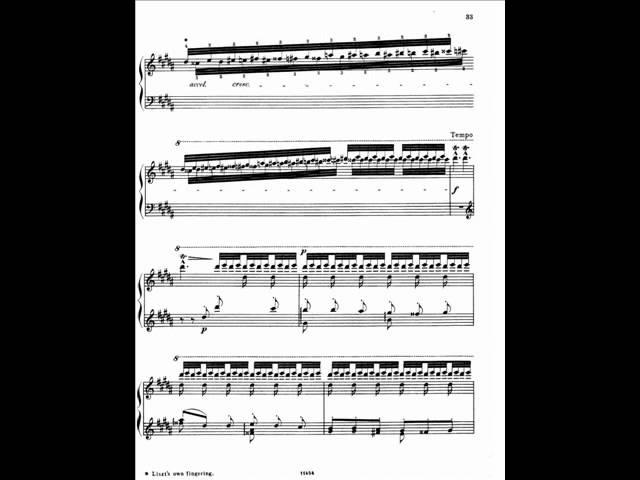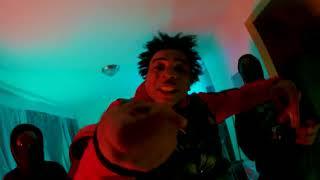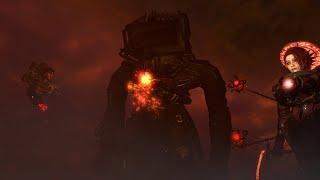
Jorge Bolet plays Liszt 'La Campanella', from Paganini Etudes, S.141
Комментарии:

What 1Thompsonmusic means - i think - is that the distinctive features of the listz's campanella are virtuosism and flowing style. This interpretation is slower than Argerich and Kissin one, so Bolet did not respect standard view of this piece. i think every interpretation has his own reason to be, maybe the Bolet one accords to the Liebestraum tones. What is essential is that classical music is a mean; writer and interpreter use them to express their feelings. There is no emotion to despise,
Ответить
I don't see any sarcasm. What's the problem if someone use vodoos? xD However, i was referring to the ironic comment of newFranzFerencLiszt, which I've interpreted as "Ufficial interpretation do not exist", but maybe I was wrong!
Ответить
The piece is marked Allegretto, so Bolet's speed is perfect. BTW, Argerich never played La Campanella...
Ответить
masterpiece, but this was Paganini piece, then liszt arranged the piece for piano
Ответить
Hardly. The main theme is Paganini's. The treatment is purely Lisztian and it amounts to an original composition. It's like saying that Brahms' Paganini Variations are Paganini's piece, too.
Ответить
yes but the flight od bumblebee was Korsakov piece.......it wasn't kziffra piece
Ответить
I mean his transcription.
Ответить
This has probably been one of the most clean interpretations. Bolet, what a gift! I also enjoy Cziffra's La Campanella. Have you seen him execute the 4th and 5th finger trill? Only person being able to match is Yundi Li. Unfortunately, there is no video recording but he did record this! (1972-73). Unlike those Rubenstein la campanella fakes. Anyway, thanks for sharing!
Ответить
Merveilleuse interpretation...Belle clarté sonore !
Ответить
How incredibly bland. Also, he ignores a lot of stuff on the score. This piece is monumental, and throughout the entirety of his learning this, he couldn't once find the time to count how many times to repeat the octave D# at the end? The L.H. chords leading up to the cadenza were completely made up too...
Ответить
Outstanding~!!!!
Ответить
imo yundi li did it better. i dont doubt the pianist's ability, but to be honest this could pass for a MIDI recording.
Ответить
JORGE BOLET is the pianist who played for Dirk Bogarde (in the role of Franz Liszt) in the movie (1960)
SONG WITHOUT END. Just to play Liszt is tremendous. Almost anything he wrote is very difficult to play.

Liszt's piano works played by George Bolet is the best for me.
Ответить
niccolo mi amor!!
Ответить
Somerset Maugham's words about Chekhov's short stories can be applied to Bolet's Liszt with very little paraphrase: you would think anybody can play like that but for the fact that nobody does. :-)
Ответить
Perfect!!! Amazing!!!
Ответить
Lyrical👍👏👏👏👏👏👏
Ответить
it hurts to me that someone disliked this
Ответить
There is no Liszt interpreter that understands Liszt as much as Bolet does. Maybe there is a little prejudice here as my teacher was also taught by Bolet.
Ответить
Magnifica interpretazione!
Ответить
人生ではじめて聴いたカンパネラはボレットです。衝撃受けました。こんな曲あっさり弾くって出来ないんです。癖が出すぎたり、頭で描いているのと実際に演奏してるのが違うようになるくらい難しい曲をこんなに癖なく、スマートに弾くってすごいですね。スマートに癖なく弾くカンパネラ、なかなか出来ないんですよね
Ответить
I can see why most people dislike this interpretation, but for me it brings out the musicality the most, nothing is hidden behind speed and fancy technical bullshit
Ответить
🎼🎶🎶🎹 🇮🇷🥉. México 👋👋👋👋👋👋🔥🏆🥇
Ответить
la meilleure interprétation de la Campanella qu’il m’ait été donné d’entendre : chaque note est présente dans une clarté inouïe, comme la clochette. de plus il maintient un tempo stable durant l’entièreté de l’oeuvre avec une grande montée en tension à la fin. la fin de la pièce est simplement splendide avec un fortissimo puissant et profond.
bravo au maestro Jorge Bolet !

A very underrated pianist. In about 1938 or so, Bolet gave a “graduation” recital at the Curtis Institute in Philadelphia, having concluded his studies there. Hofmann, Horowitz, Lhévinne and Rachmaninov were in the audience. No pressure Jorge!
Ответить

























